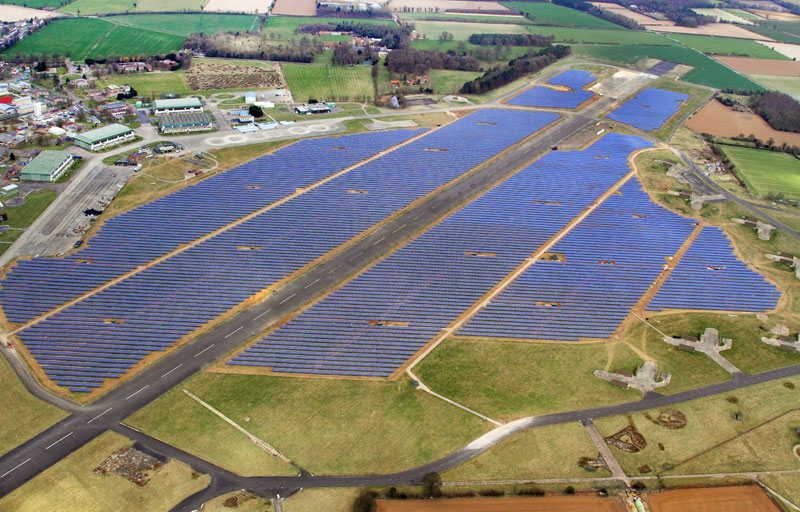Over the last two years, renewables have seen nothing but new record highs, as an energy transformation has taken hold around the world, raising the question of how quickly renewables can overtake fossil fuels in the global energy mix.
A new report launched today by Lloyd's Register, a global engineering, technical and business services organization wholly owned by the U.K. charity, Lloyd's Register Foundation, seeks to address this question, pointing to the drivers and inhibitors of energy transition.
To gather the data, the organization surveyed almost 800 professionals and industry experts around the world, including representatives of power utility companies (58%), energy companies (21%) and oil and gas firms that have renewable energy assets and activities (21%).
One of the key finding of the opinion-led research, titled Lloyd’s Register Technology Radar 2018: Renewable Energy was that China will be the first to achieve grid parity for CSP without subsidies and including the costs of storage, grid modifications, backup generation and other measures necessary to deal with intermittency in 2022, followed by Spain and the UAE in 2024, and Australia and the U.S. in 2025.
For solar PV, China will also lead the charge in 2023, followed by the U.S. in 2024, and by Germany, which is expected to hit grid parity without subsidies in 2028.
Grid parity for wind power generation is expected to arrive a little later, first in Germany and the U.K. by 2024 (offshore) and Germany and the U.S. (onshore), followed by Denmark in 2025, and in Sweden by 2033.
Although a minority of respondents (10%) believe that renewables have already overtaken fossil fuels in their country, or will do so in the next two years, 58% believe that this milestone will not be reached until after 2025.
Headwinds vs. bright side
While it is unquestionable that renewable economics are improving, 62% of the survey’s respondents say that high development costs remain the primary argument against pursuing renewables in their country.
However, on the bright side, the cost of building utility-scale solar installations has more than halved in the past 10 years, which has helped to fuel the rapid expansion of solar capacity worldwide since 2014, stepping up overall renewable energy adoption.
Meanwhile, more than 45% of the surveyed executives (including 55% of those based in Europe) say that resistance to onshore wind turbines in their countries is too strong to enable significant growth from this source.
While 32% identify government policies as an inhibiting factor, an overriding 71% agree that technology advances will do more in the next five years to improve the economic case for renewables, than policy or regulatory changes.
Operational performance is expected to benefit from advanced metering infrastructure (AMI), demand response management (DRM) systems, networked sensors and accuracy of asset monitoring data, but also machine learning and blockchain.
But, it is the slow development of storage technologies that 37% of respondents believe to be the most important factor inhibiting the growth of renewables.
As storage is necessary for utilities to be able to rely on renewables for load balancing and meeting surges, respondents point out the potential of green hydrogen as an alternative form of storage to electrochemical batteries, since hydrogen fuel cells can store power for considerably longer.
In most markets, subsidies are expected to remain critical in further renewable energy adoption, as 42% of respondents agree that reaching grid parity will not be enough to cause a sustained increase in investment in renewables.
This content is protected by copyright and may not be reused. If you want to cooperate with us and would like to reuse some of our content, please contact: editors@pv-magazine.com.




They must be using extremely high estimates for grid integration costs to get such late dates for grid parity. By most accounts, it’s long past in the US for wind and around now for solar. High integration costs are an issue for the future when intrrmittent sources are (by the current CW) over 60%, which is only close for Denmark (apart from the few countries with dominant legacy hydro).
Given that one of the main focii of this article is China it is relevant that China is specifically pursuing the development of 100MW-grade Vanadium Flow Batteries.
http://www.marketwired.com/press-release/china-central-government-energy-storage-policy-encourages-use-large-vanadium-flow-batteries-tsx-venture-sri-2238302.htm
Once charged Vanadium Flow Batteries can store energy indefinitely and can have their energy storage capacity increased at very little cost by only adding more Vanadium electrolyte.
Seems like the article goes out of its way to point out the opinion of the minority.